实验六 进程基础
| 项目 | 内容 |
|---|---|
| 这个作业属于哪个课程 | 2021春季Linux系统与应用 (南昌航空大学 - 信息工程学院) |
| 这个作业的要求在哪里 | 实验六 进程基础 |
| 学号-姓名 | 18041526-吴锦波 |
| 作业学习目标 | 1.掌握Linux系统环境C语言编程概念2.学习Linux系统进程概念 |
实验内容
1.请举例说明静态链接库的创建与使用。
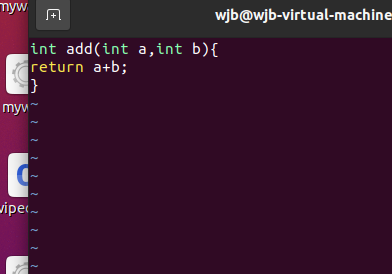
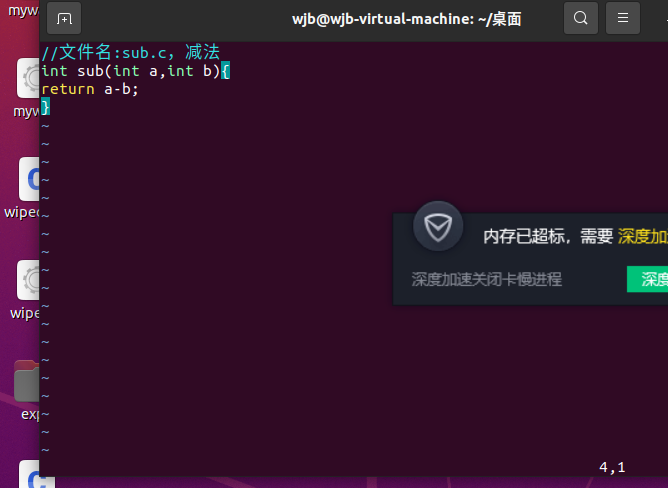
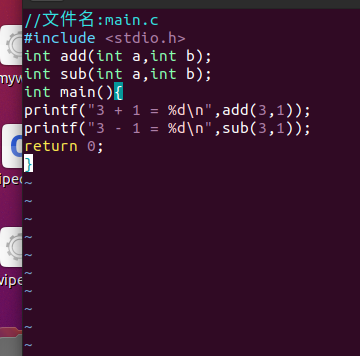

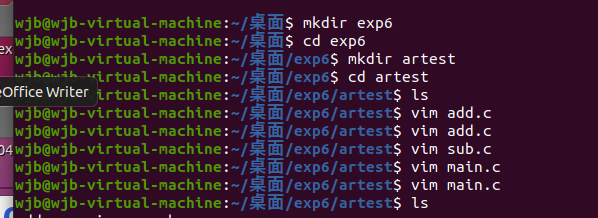
创建静态库及使用步骤:
1.vim add.c /vim sub.c /vim main.c ;创建.c文件
2.gcc -c static add.c -o add.o ;将.c生成.o 文件
3.ar -r lib库名.a add.o ;使用ar工具制作静态库
4.gcc main.o libbase.a -o app ;编译静态库到可执行文件中
5../app ;执行app文件
2.请举例说明共享库的创建与使用。
初始目录
![]()

进入src目录,在lib目录下生成libbase.so文件,即创建共享库
![]()
使用自己的共享库
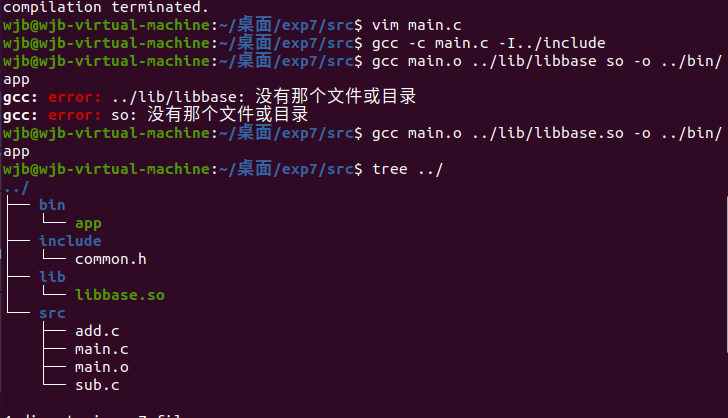
方法一:指定一个相对路径
![]()
方法二:告诉链接器动态库的名字,添加一个环境变量LD_LIBRARY_PATH=../lib 。 /lib是libbase.so所在路径


3.编程实现一个简单文件复制命令。
i/o文化复制命令代码:
#include <unistd.h>
#include <sys/types.h>
#include <sys/stat.h>
#include <fcntl.h>
#include <stdio.h>
#define BUFFERSIZE 4096
int main(int argc, char* argv[]) {
if (argc != 3) {
printf("usage:\n mycp src dst\n");
return 1;
}
int srcfd = open(argv[1], O_RDONLY);
if (srcfd == -1) {
perror("open");
return 1;
}
int dstfd = open(argv[2], O_CREAT | O_WRONLY, 0666);
if (dstfd == -1) {
close(srcfd);
perror("open");
return 1;
}
int len = 0;
char buffer[BUFFERSIZE] = {0};
while((len = read(srcfd, buffer, BUFFERSIZE)) > 0) {
if (write(dstfd, buffer, len) != len) {
perror("write error");
return 1;
}
}
if (len < 0) {
perror("read error");
return 1;
}
close(srcfd); // 关闭文件
close(dstfd);
return 0;
}
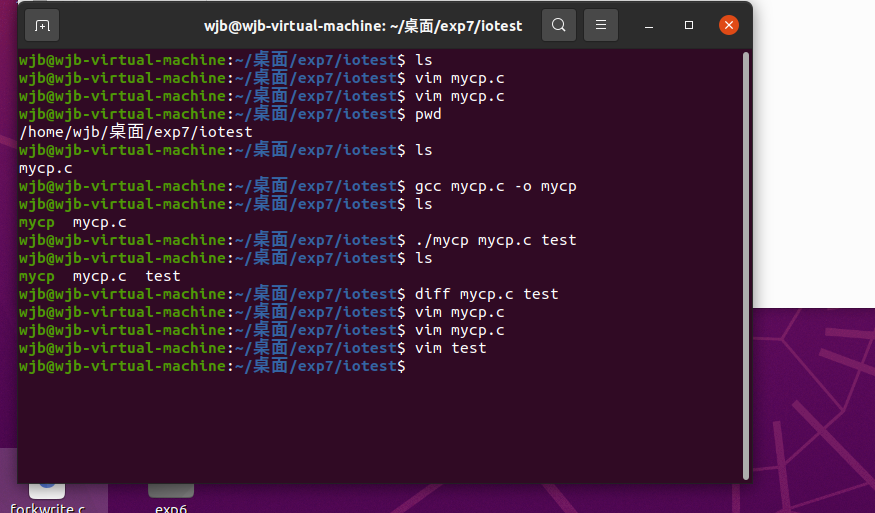
逐行比较copy.c与ctest.c的异同
![]()
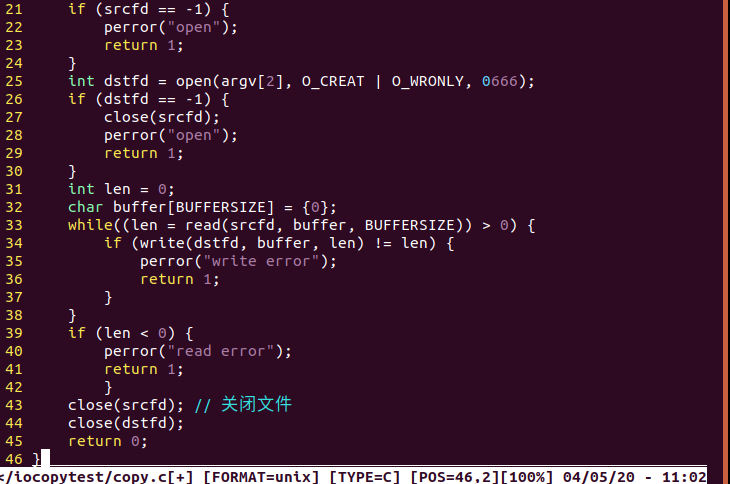
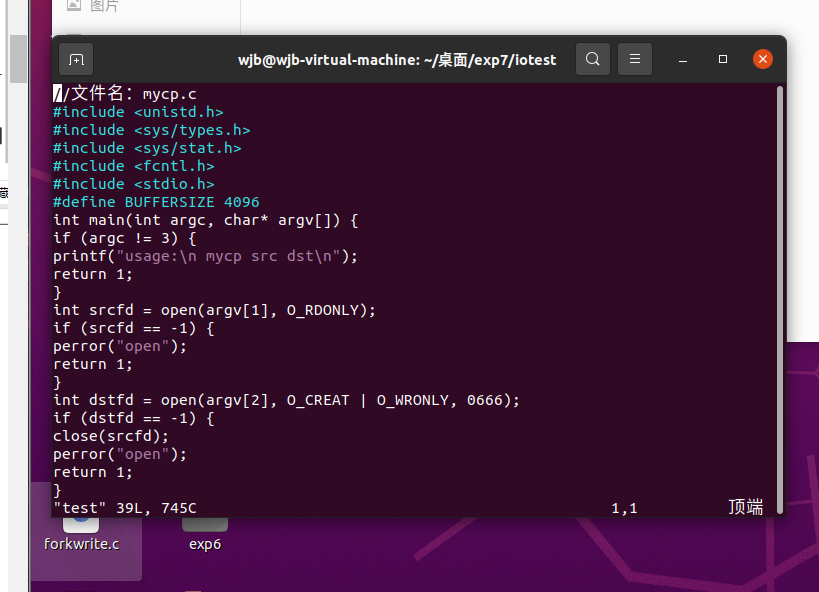
4.使用 fork 创建一个子进程,进程创建成功后父子进程分别输出不同的内容。
#include <stdio.h>
#include <stdlib.h>
#include <unistd.h>
int main(){
pid_t pid;
printf("[%d]:Begin! \n",getpid());
fflush(NULL);
pid = fork();
if(pid<0)
{
perror("fork()");
exit(1);
}
else if(pid > 0)
{
printf("[%d]:Parent process if working!\n",getpid());
}
else
{
printf("[%d]:Child process if working!\n",getpid());
}
printf("[%d]:Finish!\n",getpid());
return 0;
}
fork函数简介
(1)依赖的头文件 #include <unistd.h>
(2)fork的原理和概念:
fork子进程就是从父进程拷贝一个新的进程出来,子进程和父进程的进程ID不同,但用户数据一样。
(3)父进程和子进程
执行fork函数后有3中情况:
>0 : 本体(调用 fork 的那个进程),这个值,是分身(子进程)的 id 号。
=0:分身(子进程)
=−1:分身失败
![]()
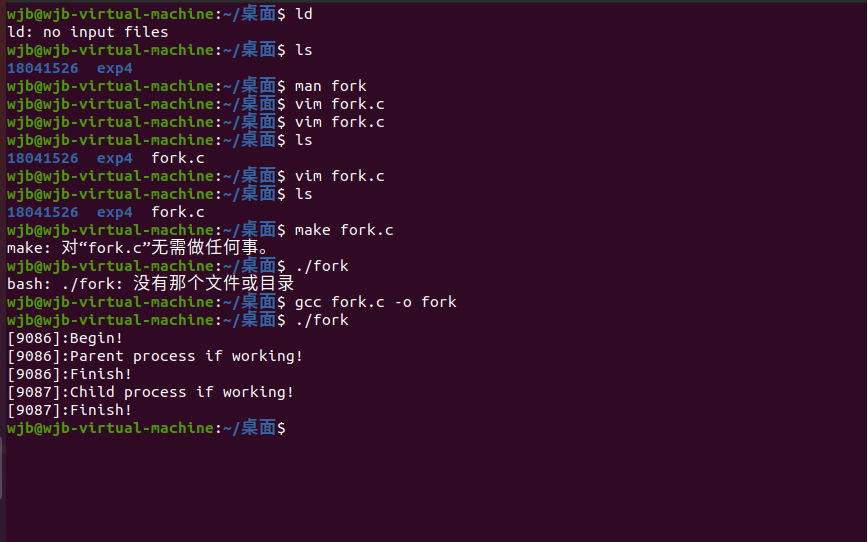
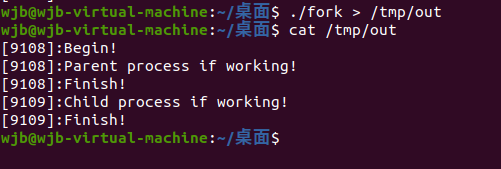
全缓冲:
全缓冲指的是系统在填满标准IO缓冲区之后才进行实际的IO操作;
注意,对于驻留在磁盘上的文件来说通常是由标准IO库实施全缓冲。
行缓冲:
在这种情况下,标准IO在输入和输出中遇到换行符时执行IO操作;
注意,当流涉及终端的时候,通常使用的是行缓冲。
./fork1即结果直接输出在屏幕上,出现了一个Begin,而将结果定向到tmp 文件Begin出现了两次?
解:原因在于 printf 这个函数,它是带缓冲区的!
1.结果没有定向到tem文件时,printf 接收到字符串后,首先把字符串复制到一个 char 数组(缓冲区)里,当这个数组遇到了特定的字符,比如 ‘\n’ 字符,回车或者装满等等,就会立即把字符写到屏幕终端 2.结果定向到tmp文件时,printf 函数遇到 ‘\n’ 字符,并不会立即把字符写到文件里,printf 里的缓冲区数据还没来得及被刷新到 tmp 文件里,就被 fork 函数复制了,同时,printf 的缓冲区也被复制了一模一样的一份出来。2.结果定向到tmp文件时,printf 函数遇到 ‘\n’ 字符,并不会立即把字符写到文件里,printf 里的缓冲区数据还没来得及被刷新到 tmp 文件里,就被 fork 函数复制了,同时,printf 的缓冲区也被复制了一模一样的一份出来。


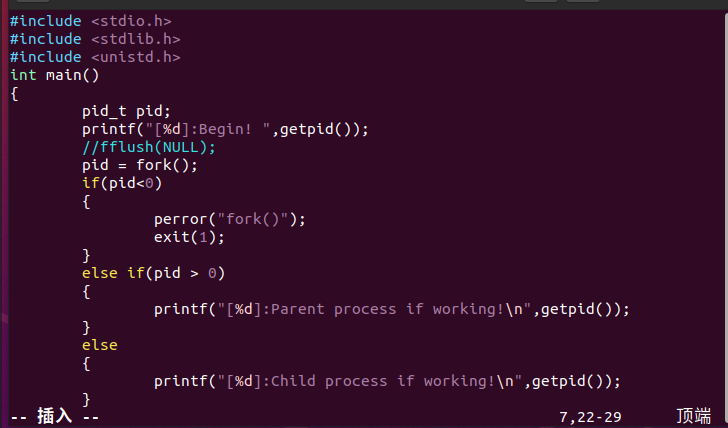

5. 使用fork创建多个子进程。
int i;
pid_t pid;
for (i = 0; i < 3; i++)
pid = fork();
上面代码段会产生多少子进程?
答:2^3-1=7 ;产生7个子进程
代码:
#include <stdio.h>
#include <stdlib.h>
#include <unistd.h>
int main(){
int i;
pid_t pid;
printf("[%d] Begin! \n",getpid());
for (i = 0;i < 3; i++)
{
if((pid = fork()) ==0 )
break;
}
if(pid<0)
{
perror("fork()");
exit(1);
}
else if(pid > 0)
{
printf("[%d] Parent process is working!\n",getpid());
}
else
{
printf("[%d] Child process %d is working!\n",getpid(),i);
}
return 0;
}
![]()
编译生成.o文件
![]()
使用sleep函数简单控制进程输出顺序
#include <stdio.h>
#include <stdlib.h>
#include <unistd.h>
int main(){
int i;
pid_t pid;
printf("[%d]:Begin! \n",getpid());
for (i = 0;i < 3; i++)
{
if((pid = fork()) ==0 )
break;
}
if(pid<0)
{
perror("fork()");
exit(1);
}
else if(pid > 0)
{
sleep(3);
printf("[%d] Parent process if working!\n",getpid());
}
else
{
sleep(i);
printf("[%d] Child process if working!\n",getpid(),i+1);
}
return 0;
}

6.在 fork 之前以写的方式创建了一个文件 test.txt。然后 fork 出的子进程立即向文件中写入“world”,然后睡眠5秒。而父进程在 fork 后睡眠3秒后向 test.txt 写入 "hello",并关闭描述符。子进程恢复后,又向 test.txt 文件中写入 "lalala"后关闭描述符,结束。
#include <unistd.h>
#include <sys/types.h>
#include <sys/stat.h>
#include <fcntl.h>
#include <stdio.h>
int main() {
int fd = open("test.txt",O_WRONLY | O_CREAT,0664);
if (fd == -1){
perror("open");
return 1;
}
printf("I'm father\n");
printf("before fork\n");
pid_t pid = fork();
if (pid > 0){
sleep(3);
printf("I'm father; I'm writing test.txt...\n");
write(fd, "hello", 5);
close(fd);
}
else if (pid ==0){
printf("I'm child; I'm writing test.txt...\n");
write(fd, "world", 5);
sleep(5);
write(fd, "lalala", 6);
close(fd);
}
else {
perror("fork");
return 1;
}
return 0;
}
![]()
编译forkwrite.c生成.o文件并且运行生成的文件
![]()
7.分别在主函数中使用execvp 启动 ls 命令以及使用 fork 函数产生子进程调用 execvp 启动 ls 。
使用execvp启动ls命令代码:
#include <stdio.h>
#include <stdlib.h>
#include <unistd.h>
int main(){
char* argv[] = {"ls","-l",NULL};
if (execvp("ls",argv) == -1){
perror("exec");
return 1;
}
return 0;
}
![]()
编译execls.c并且运行生成的文件
![]()
使用 fork 函数产生子进程调用 execvp 启动 ls :
#include <stdio.h>
#include <stdlib.h>
#include <unistd.h>
int main(){
char* argv[] = {"ls","-l",NULL};
pid_t pid = fork();
if (pid > 0){
printf("I'm father\n");
}
else if (pid == 0) {
printf("I'm child\n");
if (execvp("ls",argv) == -1){
perror ("exec");
return 1;
}
}
else {
perror("fork");
return 1;
}
return 0;
}
编译forkandexec.c并且运行生成的文件
![]()
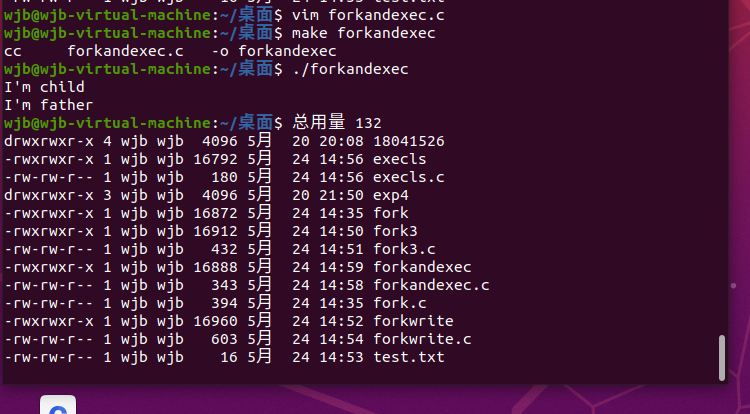
8.创建5个僵尸进程,并在终端通过 ps axf 命令查看僵尸进程信息。
代码:
#include <unistd.h>
#include <stdio.h>
#include <string.h>
int main() {
printf("before fork\n");
pid_t pid, n = 5;
while(n--) {
pid = fork();
if (pid == 0)
break;
else if (pid < 0){
perror("fork");
return 1;
}
}
if (pid == 0) {
printf("hello, I'm child %d; my father is %d\n", getpid(),getppid());
//getpid() 获取当前进程的pid
//getppid() 获取当前进程的父进程的pid
return 0;
}
while(1) {
sleep(3);
printf("hello, I'm father %d\n", getpid());
}
return 0;
}
![]()
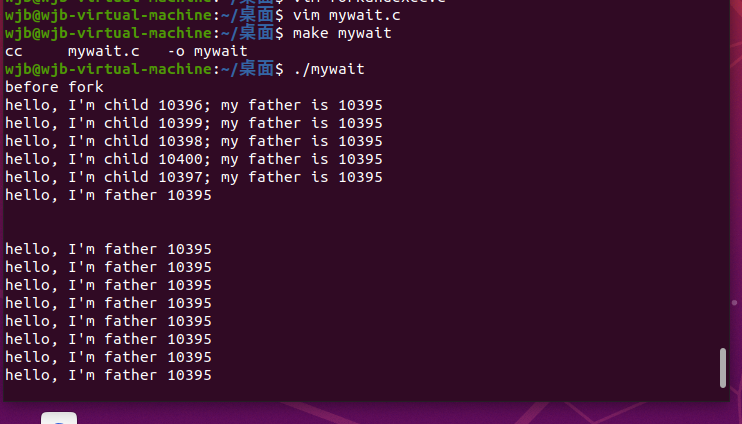

9.通过 wait 来清理僵尸进程。
代码:
#include <unistd.h>
#include <stdio.h>
#include <string.h>
#include <sys/wait.h>
#include <sys/types.h>
int main() {
printf("before fork\n");
pid_t pid, n = 5;
while(n--) {
pid = fork();
if (pid == 0)
break;
else if (pid < 0) {
perror("fork");
return 1;
}
}
if (pid == 0) {
printf("hello, I'm child %d;my father is %d\n",getpid(),getppid());
return 0;
}
while(1) {
sleep(3);
pid = wait(NULL);
if (pid == -1) {
perror("wait");
sleep(10);
printf("I'm father %d;I have wiped out all zombies\n",getpid());
return 1;
}
printf("Hello, I'm father %d; child %d exit\n",getpid(),pid);
}
return 0;
}

创建文件wipeout并编译运行生成的文件
![]()
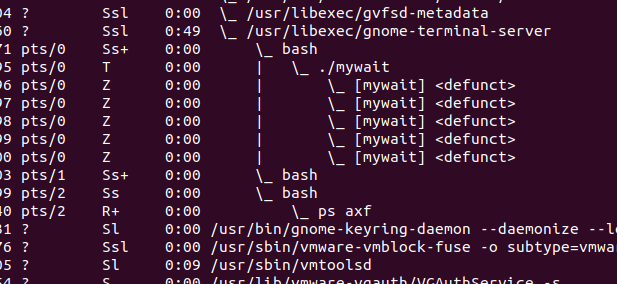
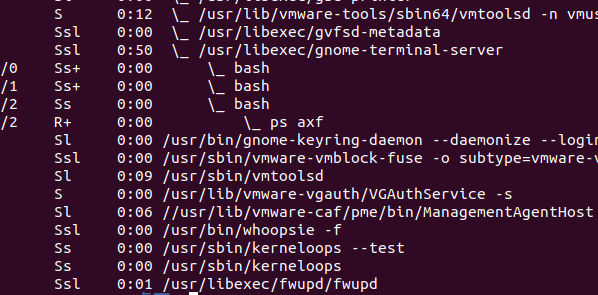
10.父进程通过 waitpid 函数等待特定子进程结束,若该子进程不结束,父进程一直阻塞。
代码:
#include <stdio.h>
#include <signal.h>
#include <unistd.h>
#include <errno.h>
#include <sys/types.h>
#include <sys/wait.h>
#include <stdlib.h>
void handler(int sig)
{
pid_t pid;
while ((pid = waitpid(-1,NULL,WNOHANG)) > 0)
{
printf("wait child sucess : %d\n",pid);
}
}
int main()
{
signal(SIGCHLD,handler);
pid_t pid = fork();
if (pid == 0)
{
printf("child1 pid : %d\n",getpid());
sleep(3);
exit(1);
}
pid_t pid2 = fork();
if (pid2 == 0)
{
printf("child2 pid2 : %d\n",getpid());
sleep(5);
exit(2);
}
pid_t pid3 = fork();
if (pid3 == 0)
{
printf("child3 pid3 : %d\n",getpid());
sleep(7);
exit(3);
}
printf("father pid : %d\n",getpid());
while (1)
{
printf("father do self\n");
sleep(1);
}
return 0;
}
![]()
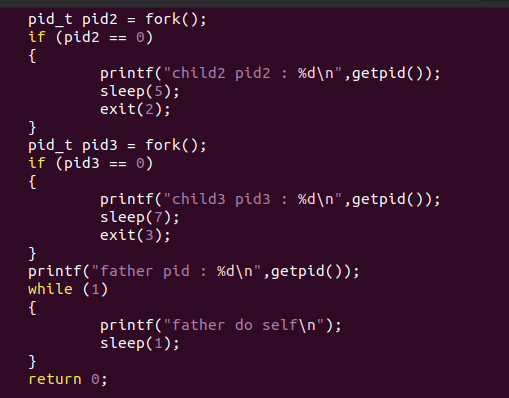

‘


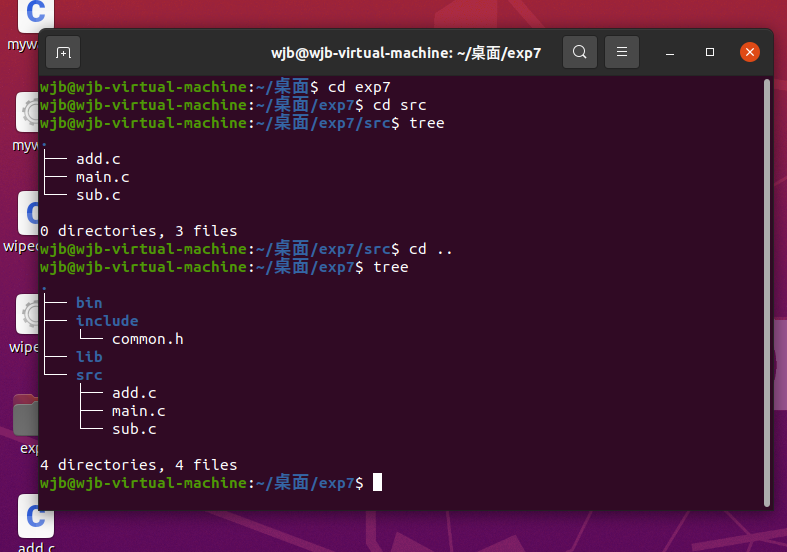


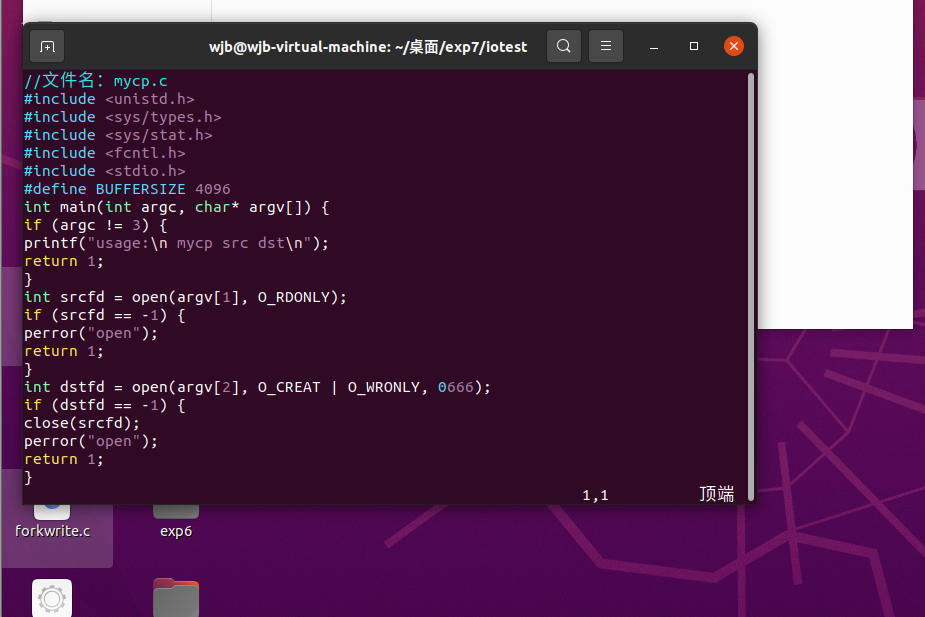
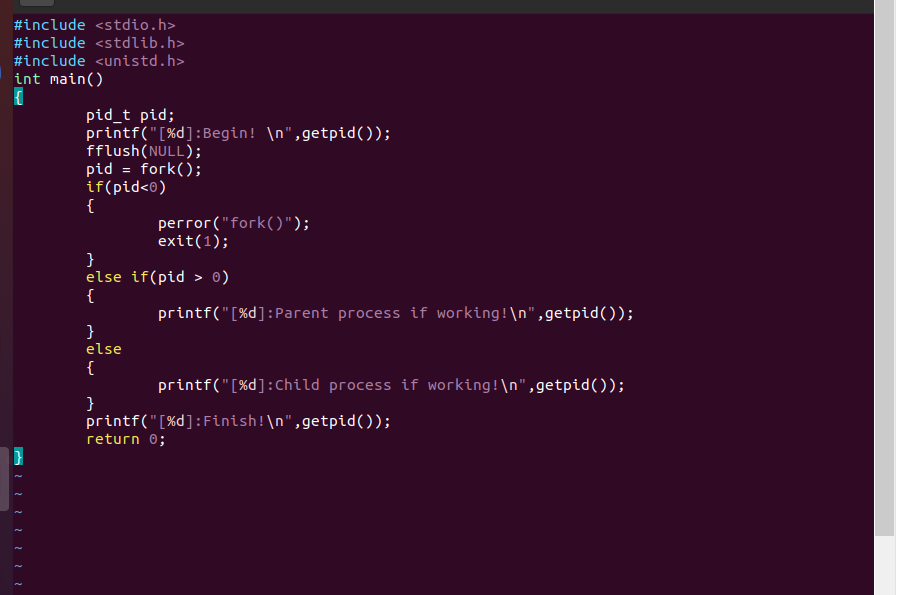



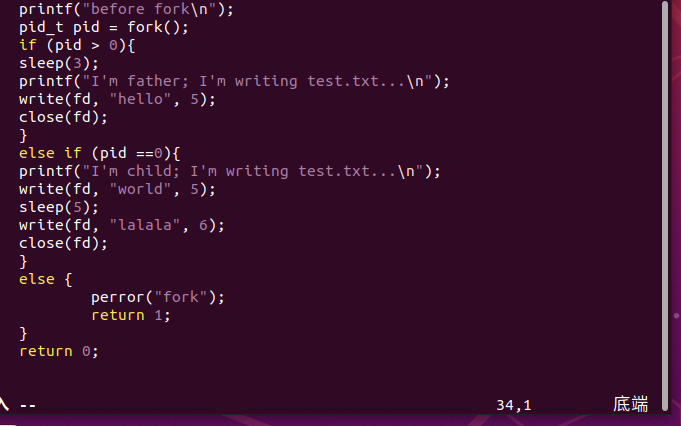

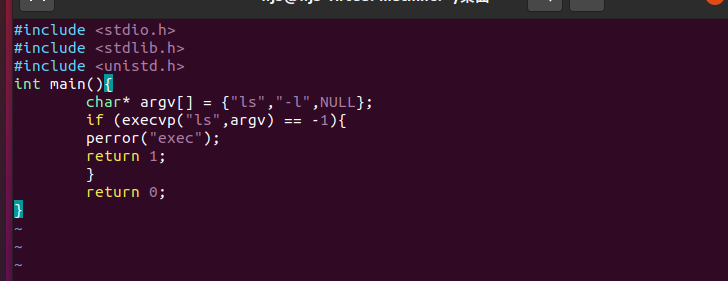
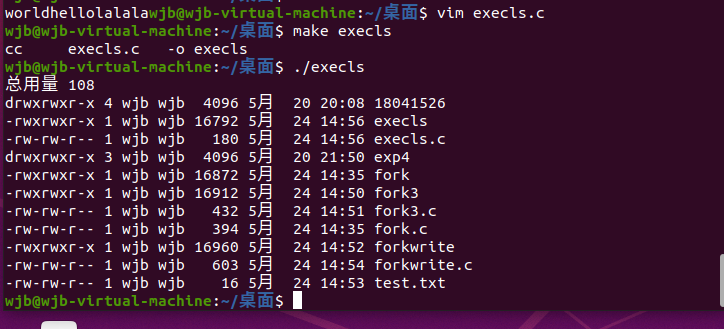
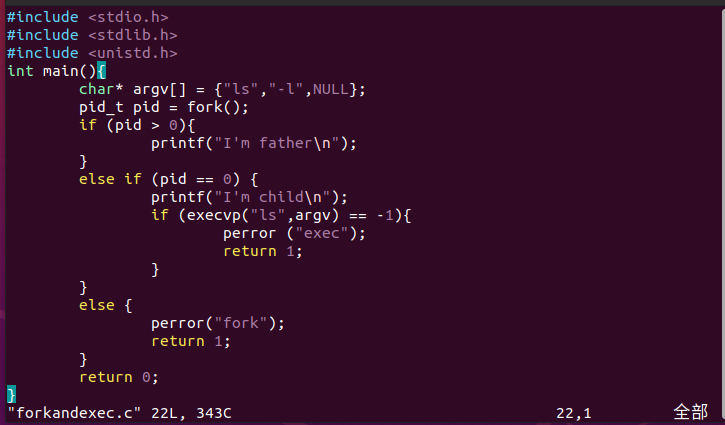
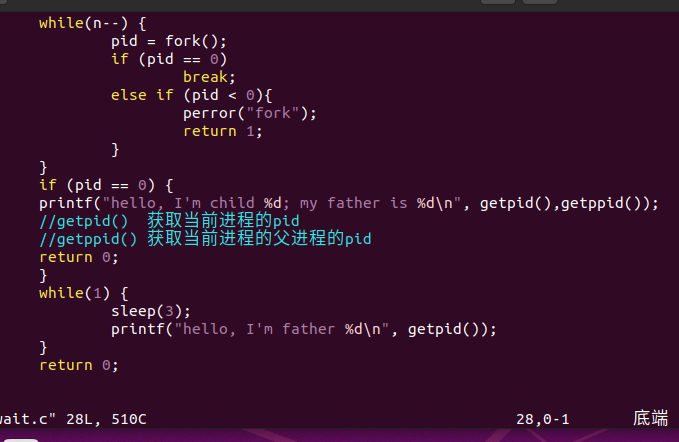
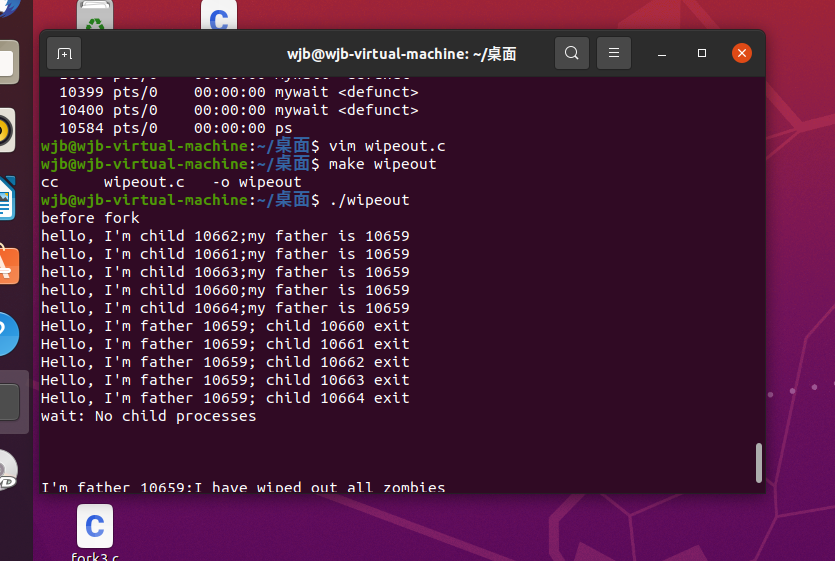
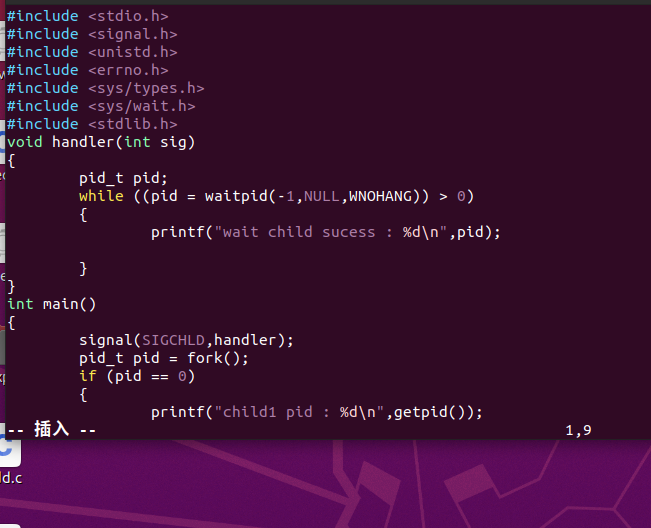

 浙公网安备 33010602011771号
浙公网安备 33010602011771号